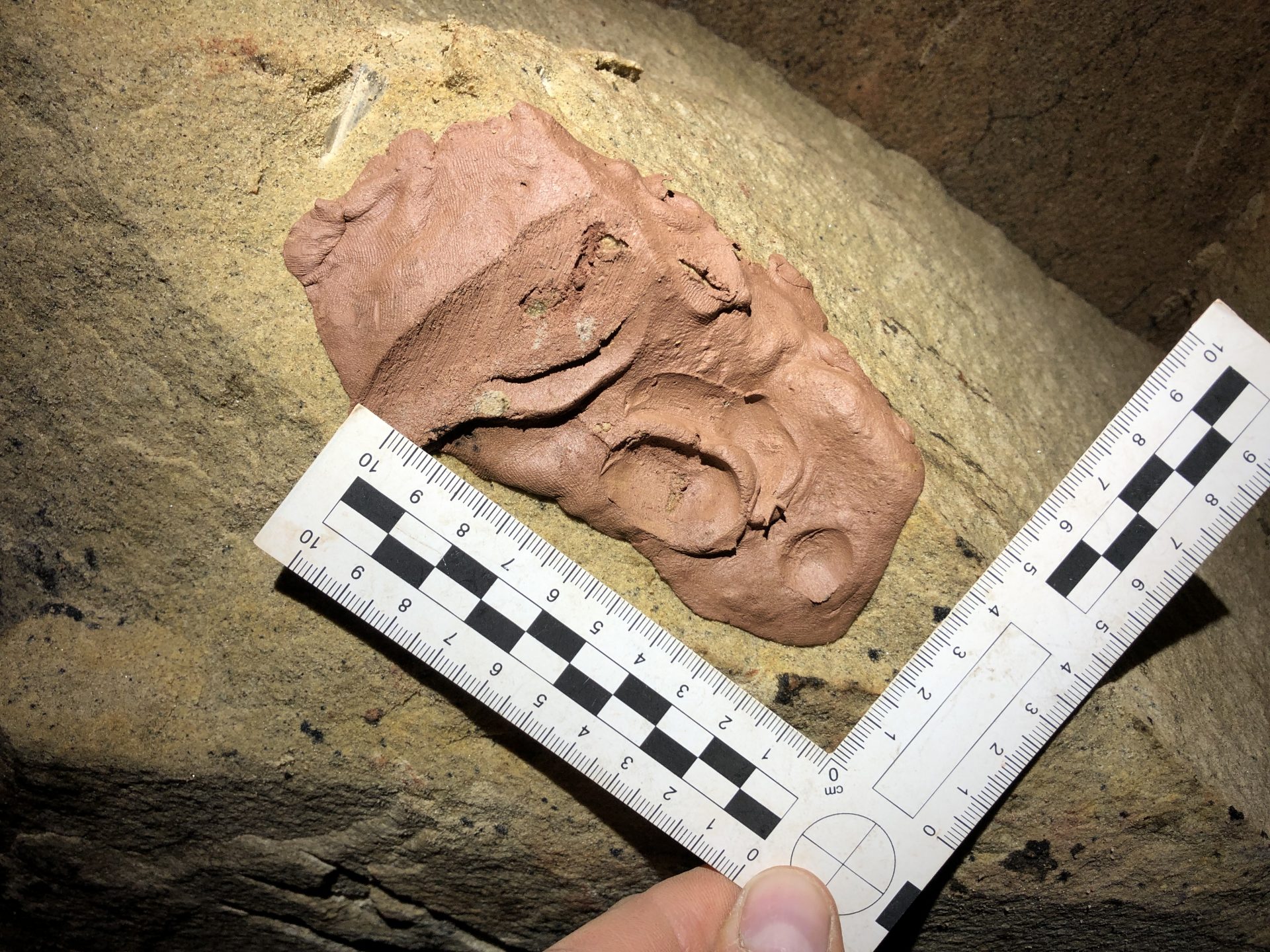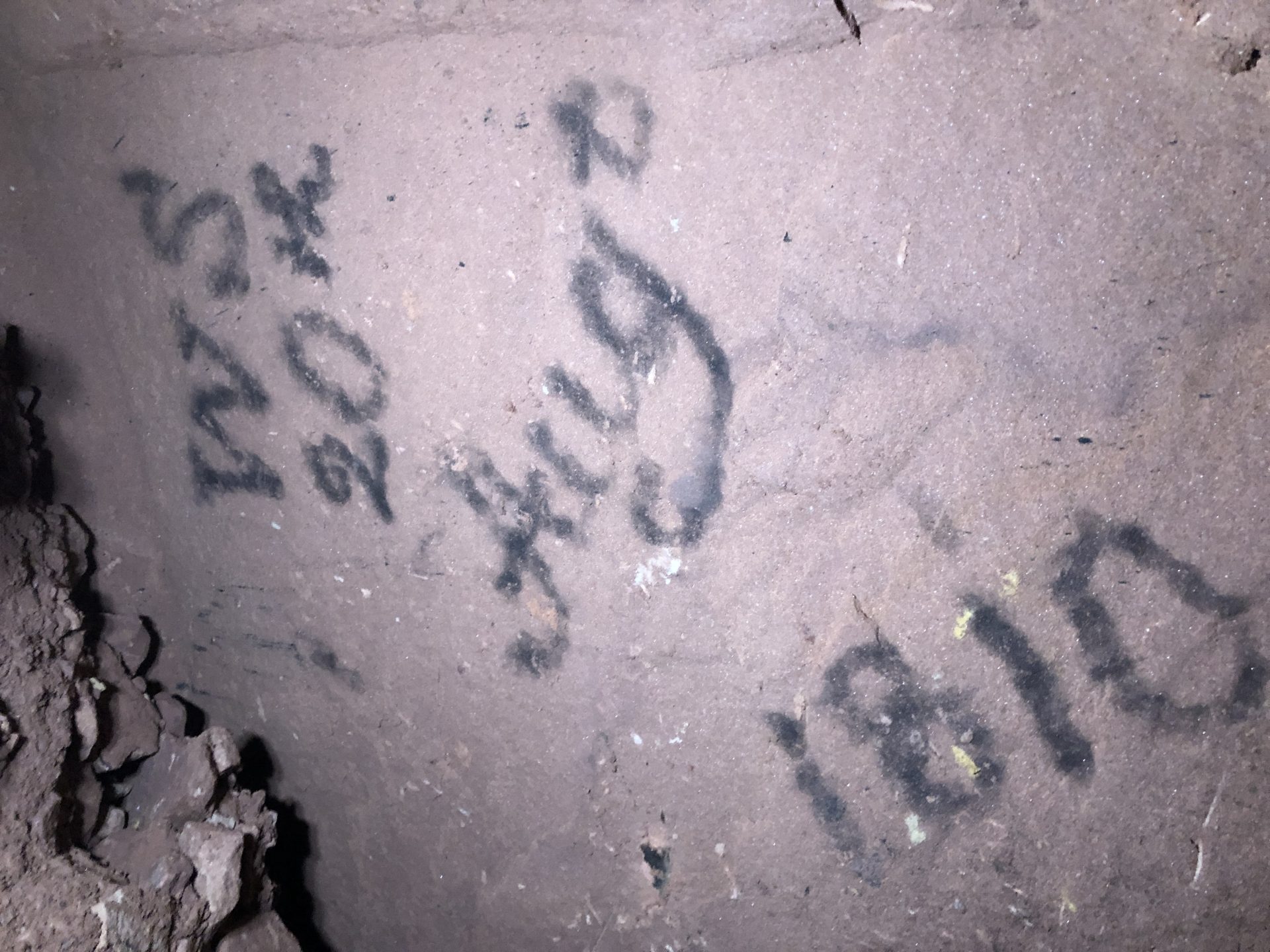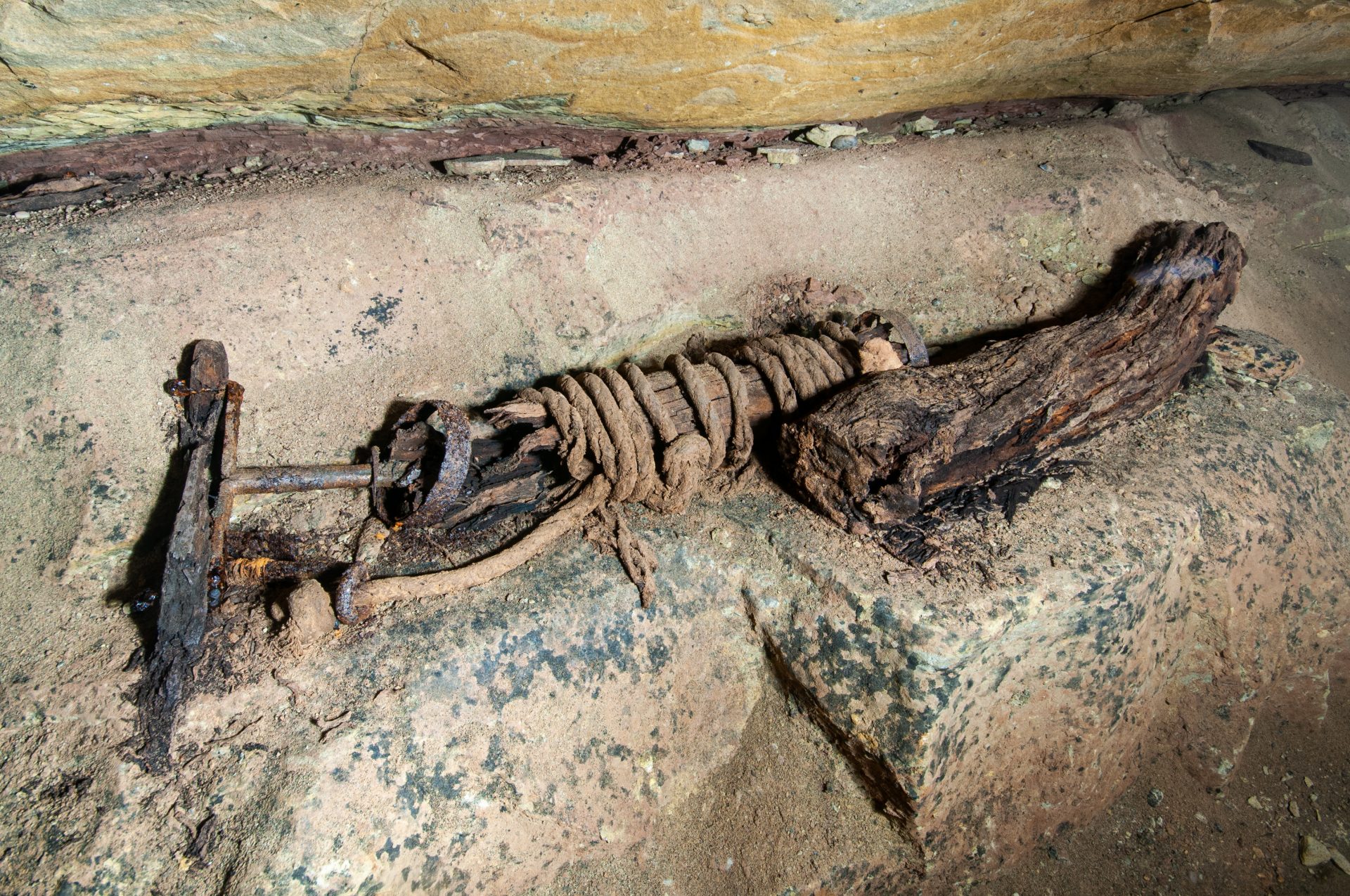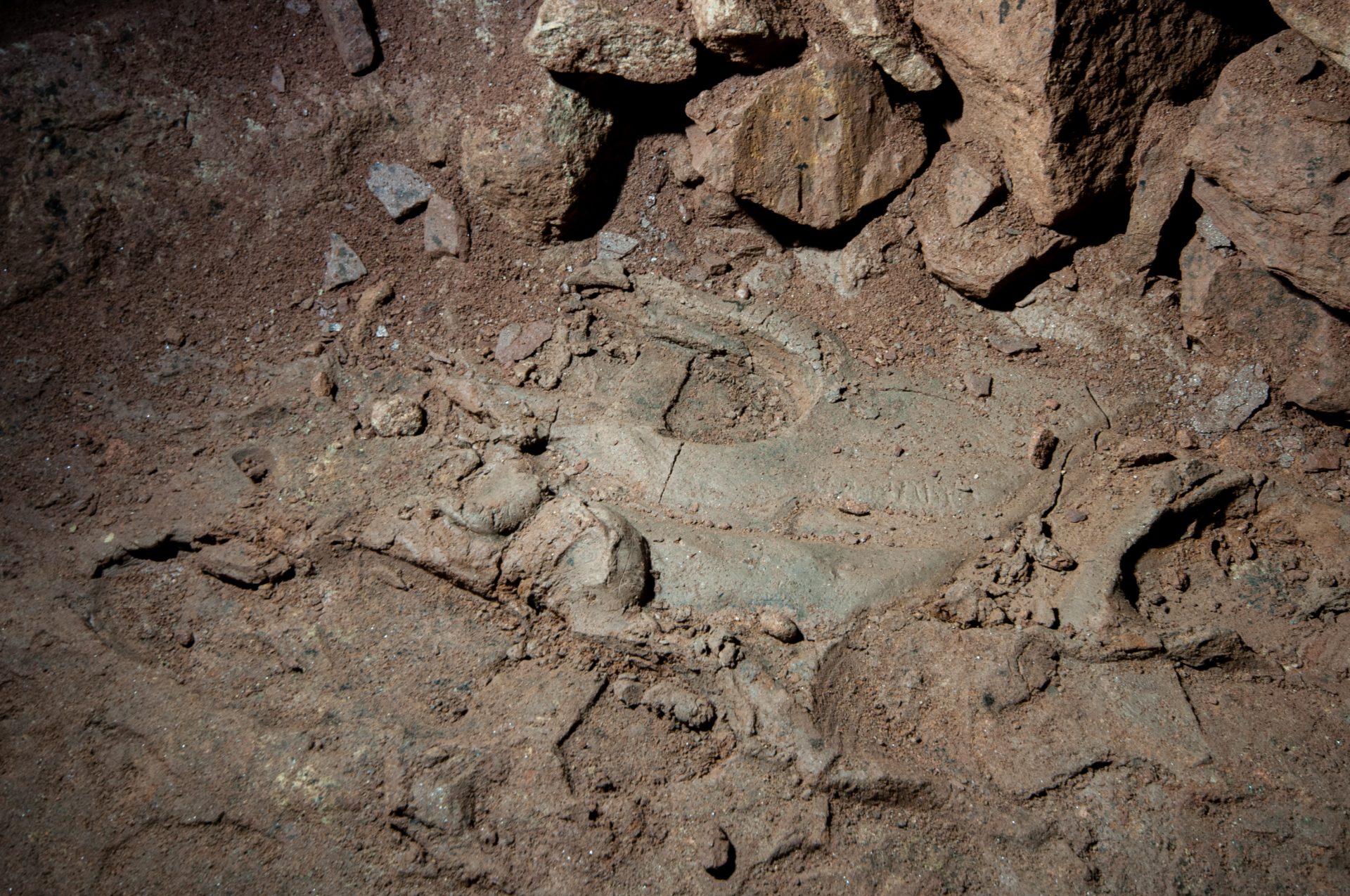
A cobalt mine, abandoned in the early 19th century, has been discovered at Alderley Edge in Cheshire revealing a ‘time capsule’ of personal objects and equipment the workers left behind.
The shaft ran in after the unusually wet weather in 2019/2020 and was found by a warden surveying the field. The Derbyshire Caving Club then capped it off and installed a lid ready to excavate the rest of the spoil blocking the shaft. Removing the blockage led them into the workings.
The latest discovery is a mine believed to have been abandoned around 1810. It is rare to find a one in such pristine condition. Among the objects found in the mine were leather shoes, clay pipes, a metal button from a jacket, along with inscriptions written in candle soot, and mine machinery. One interesting find was a clay bowl, carefully walled up, possibly an act by superstitious miners as an offering of thanks for a good mineral vein. Other discoveries include clearly defined fingerprints in clay that had been used to hold candles, and the imprint of corduroy from a worker’s clothing where he leaned against a wall. Among the larger items was a windlass, complete with rope. This is the first to have been found at Alderley Edge.
Ed Coghlan of the Derbyshire Caving Club points out that most of the mines in the area have been accessible in some form since they were abandoned and so features left by the miners have been lost amongst those left by later visitors. He told Darkness Below: “We have so much at Alderley that has had decades of visitors exploring which has meant that we have lost trace of the original miners. This is so pristine that it has to be preserved. We have miners’ footprints, personal effects and even fingerprints in the clay which is so rare for us at Alderley.”

Cobalt was used widely especially for the blue colouring in pottery and glass. However, cobalt mining was short lived in England because imports from the continent were more plentiful. These stalled during the Napoleonic Wars between 1803 and 1815 leading to the search for sources closer to home. At this time, the land at Alderley Edge was owned by Sir John Thomas Stanley. He anticipated a lucrative cobalt market, so in 1808 he leased the rights to the extraction of cobalt ore in a network of his mines. These were abandoned in 1817 when imports resumed. A survey shows that the mine extends to the edge of Sir John’s land but stopped before passing under the neighbouring de Trafford estate. The mine was worked only for a short period, just long enough for ‘WS’ to leave his initials and the date ’20th Aug 1810′.

Ed says: “We found other more basic initials and numbers in what we believe were the ‘cribs’ or rest areas, as if someone had been learning and practising their writing. But the ‘WS’ is stylishly written, with quite a flourish. Our research so far has not identified who this could be. Was it just an individual wanting to say, ‘I was here’, or from a visit by a mine manager or estate owner, or could it have been to indicate the last day this mine was in use?”

The artefacts discovered are fragile, removing them from the mine to a museum would risk their destruction and it is possible that their preservation has been aided by the low oxygen levels found in the workings. Add to this the simple impossibility of removing and conserving fingerprints in the mud and clay, imprints of corduroy and such like and it becomes obvious that the best, possibly the only, way to conserve the mine and its contents is to severely limit future access. The shaft has been capped and sealed and only very limited research visits are to be permitted in the future. Ed said: “The objects found in the mine have been photographed and catalogued and left where they were found, to remain in the underground conditions which have preserved them. It leaves the mine as a time capsule, protecting a place that was once a hive of activity for future generations to explore and enjoy”.

The National Trust has worked with a specialist team from Christians Survey & Inspection Solutions to create an immersive fly-through of the cobalt mine which is now being shared online to give everyone a chance to see inside the mine. National Trust archaeologist Jamie Lund said: “This discovery is helping us understand a less well-known chapter in the story of mining at Alderley Edge, which has been explored and exploited for 4000 years. We are passionate about giving people the chance to explore our industrial heritage and the Caving Club conducts tours of some of the more accessible mines that have been discovered at Alderley Edge. But sometimes locations with impractical access mean we need to find other ways to bring the place to life for visitors. Virtual access is a great way anyone can navigate their way around the mine from the comfort of their armchair and imagine themselves in the boots of the men who worked there.
The fly-through was funded with support from the Robert Kiln Fund. The currently available model is being improved and enhanced. To see the fly through and for more information on Alderley Edge visit www.nationaltrust.org.uk/alderley-edge-and-cheshire-countryside
Correspondent Graham Mullan, with thanks to Edward Coghlan of the Derbyshire Caving Club
